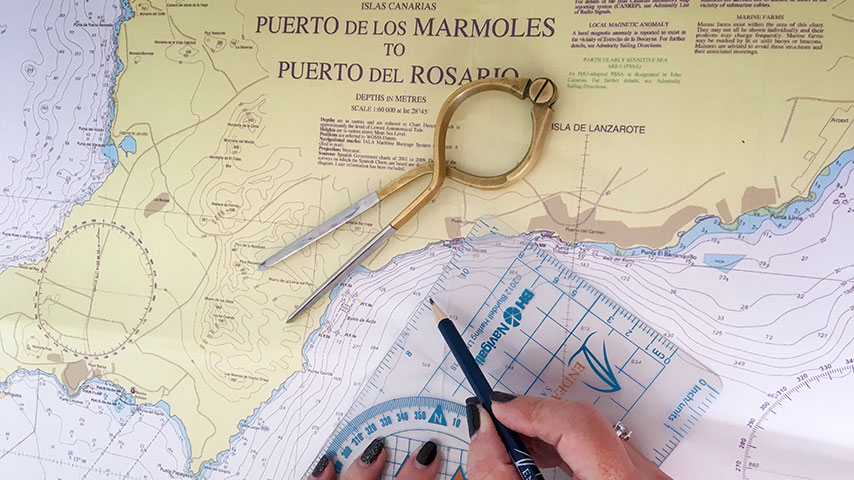
Ocean Passage Planning
Prior to doing any trip, you will need to do some planning, so you will need to purchase the relevant charts, almanacs etc…..
To include in the plan as a minimum
- Watch Bill
- Victuals
- Estimated Fuel Consumption
- Pre-departure checklist
- Spare parts required
- Route plan including waypoints, hazards, ports of refuge etc.
- Weather information/where you can obtain updates
- Currents tides
Also to include in your plan would be pilotage plans for your departure port and your destination port.
For more information on Passage Planning click on this link to the MCA’s SOLAS Chapter 5, Annexes 24 & 25, these are “Voyage Planning” and “Guidelines for voyage planning” and gives great advice and information on writing a passage plan (and a lot more)
The MCA break Passage Planning down into 4 essential steps
- Appraisal
- Planning
- Execution
- Monitoring
Appraisal
In this stage, you will look at the overall route from the departure port to the destination port and gather all the relevant information. The appraisal can include details from all the following publications:
- Chart Catalogue
- Charts
- Ocean Passages of The World
- Routeing Charts
- Admiralty Sailing Directions
- Admiralty List of Lights and Fog Signals
- Admiralty List of Radio Signals
- Tide Tables
- Tidal Stream Atlas
- Notices to Mariners
- Admiralty Distance Tables
- Ships Routeing
- Navigational Warnings
- Owners and other sources
- Personal Experience
Looking at all the information you can gather you can then draw up the general intended track.
Planning
With your full appraisal and general intended track, you can now prepare your plan, remembering your plan should also include your pilotage.
It is important to mark dangerous areas such as wrecks, shallow water, reefs, emergency anchorage positions, etc – anything that might aid safe navigation.
Now you can plan your waypoints with bearings and distances between each and approximate timings.
Do not forget to also include:
- No-Go Zones
- Contingency plans for example, alternative routes, emergency anchorages, safe ports of call, waiting areas etc.
- Tides and currents
- Weather
You may also use techniques such as:
- Leading lines
- Clearing bearings
- Back bearings
- Depths/contour lines
Execution
In this stage, you will execute the plan that has been prepared.
Monitoring
Monitoring is that aspect which takes into account
- Checking of the position of the vessel, such that it remains within the safe distance from any danger areas. A safe and successful voyage can only be achieved by close and continuous monitoring of the ship’s progress along the pre-planned tracks.
- Monitoring fuel, victuals
- Updating weather
Situations may arise where you feel it prudent to deviate from the plan. In such a case, this should be communicated with the crew and take any action that you may deem necessary for the safety of the yacht and its crew. This stage is a very important stage and everyone takes a part to execute the plan. This calls for personal judgement, good seamanship and experience.